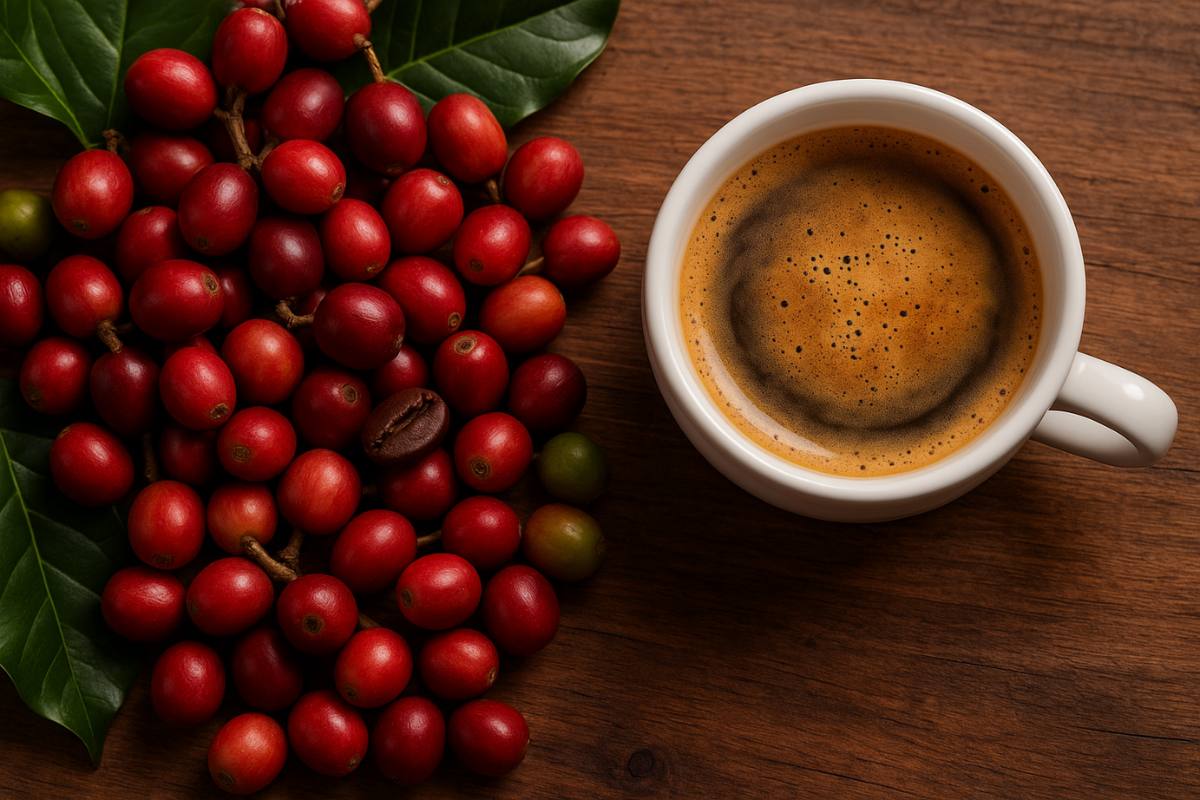Do you love coffee? Then get ready to be surprised! In addition to being one of the most consumed beverages in the world, coffee hides fascinating facts that many people don’t know. In this article, you’ll discover unexpected facts about the history, culture, and even the science behind coffee — from its ancient controversies to surprising facts about how it’s grown and consumed around the world.
Coffee Was Once Considered a Controversial Beverage
Coffee is a part of daily life for millions of people, but even the most devoted coffee lovers don’t always know the fascinating facts behind the brew. From coffee’s curious history to strange scientific findings, this article reveals surprising and little-known facts about one of the world’s most beloved beverages.
In the 16th and 17th centuries, coffee was banned in several regions for being “too stimulating.” Religious and political leaders in Mecca, Constantinople, and parts of Europe feared that coffeehouses encouraged rebellious thinking and immoral behavior.
Even in Italy, some Catholic leaders tried to classify it as a “sinful beverage” or something “inappropriate for Christians” — until Pope Clement VIII tasted it and declared: “It is so delicious that it would be a sin to let only non-Christians enjoy it.”
Coffee Is Technically a Fruit Juice
Since coffee comes from the seed of a cherry-like fruit, it is, technically speaking, a fruit product. When you brew coffee, you’re extracting flavor from the roasted seed inside that fruit—meaning your morning cup has more in common with fruit juice than you may have thought.
The Word “Coffee” Has Arabic Roots
The English word “coffee” comes from the Arabic word “qahwa”, which originally referred to wine. The term traveled through Turkish (“kahve”), then Dutch (“koffie”), before becoming “coffee” in English.
This linguistic journey shows just how far coffee has traveled—both geographically and culturally.
Finland Drinks the Most Coffee Per Capita
While countries like Brazil and the U.S. consume the most coffee in total, Finland holds the title for the highest per capita consumption. The average Finn drinks about 12 kg (26 lbs) of coffee per year.
Coffee breaks are even legally mandated in some Finnish workplaces—now that’s commitment!
Espresso Has Less Caffeine Than Regular Coffee
Despite being bold and concentrated, a shot of espresso has less caffeine than a standard 8 oz (240 ml) cup of drip coffee. A single espresso shot has around 63 mg of caffeine, while a full cup of brewed coffee can range from 95 to 120 mg.
The key difference lies in serving size. Ounce for ounce, espresso is stronger, but most people drink more volume when having drip coffee.
Coffee Helped Fuel the Enlightenment
In the 17th and 18th centuries, coffeehouses became hotspots for intellectual debate across Europe. Known as “penny universities,” these cafés offered people a chance to engage in stimulating conversation for the price of a cup of coffee.
Writers, scientists, philosophers, and revolutionaries alike gathered over coffee to discuss art, politics, and science—shaping the future in the process.
Coffee Can Be Used as a Natural Fertilizer
Used coffee grounds are rich in nitrogen and make an excellent addition to compost piles or garden soil. They help enrich the soil and improve drainage and aeration.
Some people even use coffee grounds as a natural pest repellent or deodorizer around the house.
Coffee Beans Aren’t Really Beans
Although we call them “beans,” coffee beans are actually seeds from the inside of a coffee cherry. They were likely nicknamed “beans” because of their resemblance to actual legumes.
Each cherry usually contains two seeds—unless it’s a peaberry, a rare mutation where only one round seed forms.
Decaf Coffee Isn’t Caffeine-Free
Many people assume decaf means zero caffeine—but that’s not true. Decaffeinated coffee still contains small amounts of caffeine, usually about 2–5 mg per cup. This is far less than regular coffee, but it can still affect sensitive individuals.
If you’re extremely caffeine-sensitive, it’s worth noting that even decaf may keep you awake if consumed late in the day.
Coffee Was the First Food to Be Freeze-Dried
Freeze-drying technology, commonly used today for preserving foods like fruit and meals for astronauts, was first applied commercially to coffee. This innovation helped make instant coffee more shelf-stable and popular worldwide.
It also paved the way for modern food preservation techniques used in many industries today.
Caffeine Can Boost Memory—Temporarily
Studies have shown that caffeine may temporarily improve certain types of memory, particularly short-term recall. It works by stimulating the central nervous system and increasing the levels of neurotransmitters involved in attention and concentration.
However, the effects vary from person to person and depend on dose and timing.
There Are Over 120 Species of Coffee
While Arabica and Robusta are the two dominant species used commercially, scientists have identified more than 120 different coffee species. Most are wild and not cultivated on a large scale, but they may become increasingly important as the coffee industry adapts to climate change.
Some of these rare species could hold keys to more resilient crops and new flavor profiles.
Coffee Was Once Chewed, Not Brewed
Before people began roasting and brewing coffee as a drink, early civilizations in Ethiopia would grind coffee cherries and mix them with animal fat to create energy-rich “power balls” for long journeys or battle.
This chewy coffee snack was likely the earliest form of caffeine consumption.
Final Thoughts: More Than Just a Drink
Coffee has been at the center of political revolutions, artistic movements, spiritual rituals, and scientific discoveries. The next time you sip your favorite brew, remember you’re taking part in a centuries-old story filled with unexpected twists and cultural richness.
It’s not just about caffeine—it’s about connection, curiosity, and culture in a cup.
